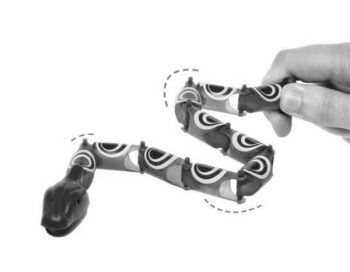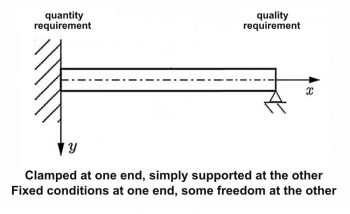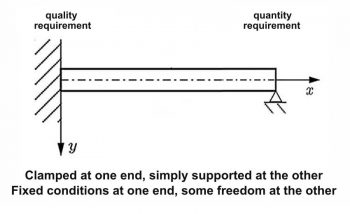Quotas, snakes and backbones
Over 50 years ago Dr. W.Edwards Deming has formulated his famous 14 Points, which are studied in every Quality Assurance course ever since. Today I would like to talk about the 11th Point of Deming’s 14 Points: “Eliminate numerical quotas for the workforce and numerical goals for management”. Much has been written on the subject, but I promise, you shall not see the outlook I bring here anywhere else.
Most people mistakenly think that Deming was a statistician, and that his greatest achievement in Japan was due to his understanding and love of that field of mathematics. In fact, nothing could be further from the truth. Not a single one of Dr. W.Edwards Deming’s 14 Points are about statistics in any form whatsoever. Rather, they are about people, management and leadership, effectiveness. And to this day the Deming Institute teaches management and leadership skills, not statistics, as its main line.
I propose to look at this question from the point of view of the laws of nature, of physics, if you like. Incidentally, physic was the subject Dr. Deming has studied at the beginning, before his discovery of statistics.

Boundary conditions
In the following example, we shall see a beam under different boundary conditions. In order to understand the example properly, I must clarify the concept of “boundary conditions”, firstly, for those who do not remember or never studied physics at all – but also in order to connect you to my meaning and the 11th Point.
The meaning of “boundary conditions” for the beam is the way it is supported: whether rigidly, as in clamping into the wall; or some degree of flexibly, as in simply supported by being placed on top of something; or free, cantilevered.
In our context, the desired Quality or quotas become the boundary conditions.
Clamping means this is a requirement, a criterion, meaning that no less is acceptable. Simple support with a degree of flexibility is a goal, something we aim for; not reaching it is not desirable but understandable. Whereas a requirement is something we must satisfy. Not meeting it is non-conformance. I am sure you can see the difference, and it is very important to use correct terminology, if you wish to have any desirable outcome in a process involving other people.
A beam clamped at both ends
Most of you remember something from high-school physics. If we take a beam and clamp it from both sides, say, embed it into a wall, it will become unmovable, rigid, inflexible in the highest possible degree. No degrees of freedom at all. Any change would bring it closer to the point of breaking.
If we make an analogy between our process and the beam, this is what would happen if we rigidly set the process requirements from both “ends” of the process: the desired Quality, and the numerical Quotas, or quantity.
Let’s continue looking at the above two rigidly set boundary conditions for the process, Quality at one end and Quotas at the other, we know that the two requirements come from two different places: one – from the QA department, who are professionally responsible for quality in production; and the other – from the Operations department, the one the workers are actually employed by.
Let’s allow that a difficulty arises to meet all the requirements (as we all know, this is a widespread state). Then, something will not be met, and so the workers will stand before the choice: do they break the Quality or the Quota requirements?
Now, let us recall the two-headed monster of having two managers (terminology of correct administration). When workers are placed into the position where they must choose whether to focus on one requirement or the other, they would always choose the one coming from their direct employer: that is the Operations department. It is a no-brainer which requirement would be chosen when the worker stands before a choice. Thus, Quality would always be sacrificed for the sake of quantity, if both requirements are rigidly set.
This is what inflexibility means, what rigid means. When there is no freedom at all, there is no possibility not to meet something, so the only thing that can happen is that it breaks.

A beam clamped at one end and simply supported at the other
In order for the process not to break, one must allow some flexibility, that is one of the beam ends must be only supported, but not fixed. In physics we would represent it by the following drawing:
Therefore, in order to allow this flexibility, we must choose one of the two as a requirement, while the other will truly become a goal – that is something to aim for, but flexible.
Quotas a fixed requirement and Quality a flexible goal
Now, if we set the rigid boundary condition to be the numeric Quotas, while the Quality requirements shall become merely a goal, then when a difficulty arises, Quality will be sacrificed.
You might think it insignificant, but let’s dig a bit deeper, shall we?
Once quality ceases to be a requirement, a rigid boundary condition, and becomes merely a goal, something to aim for but open to flexibility, then quality is compromised. Result? More non-conformance in the process, more product which would not meet specifications. But then, that would mean, in turn, that Quotas will not be met, after all, as more products will not reach the finish line! That is, in the event that Quotas are a rigid requirement and Quality is a flexible goal, we get neither Quality nor Quotas.
Quality a fixed requirement and Quotas flexible goal
Now let’s set Quality as a rigid requirement and make Quotas a flexible goal. In this case, workers, now freed from the Damocles sword of quantity hanging over their heads, can concentrate on the quality of their work. And you know what happens then? The quantity, miraculously, sorts itself out. With better quality there is less non-conformance, and therefore more actual good products to ship to the customer.
It is clear, then, that the only possibility is to set the Quality as a fixed boundary condition, while leaving the Quantity – as a goal.
For those who are still skeptical, I shall give you a couple of other examples of this principle working in our lives.

A plastic wiggly snake
Any of you have children? I ask this question often, as I find things and stories for children, as well as children themselves, have much to teach us about quality assurance as well as about people and management. So you may be familiar with this simple but ingenious toy: the plastic segmented snake. One holds it firmly by the tail segment and slightly, imperceptibly twitches it. The snake appears to move its head from right to left, its body follows the head, naturally. It is a rather lifelike movement, if two-dimensional.
From the point of view of the same physics we talked about, the tail is fixed rigidly in the operator’s fist. This is the Quality boundary condition. The other end, the head, is only supported in the two-dimensional plane by a series of pins between the segments, which fix the snake in the flat plane. But it is free to move in that plane whichever way, which gives it its lifelike flexibility.
What would happen if the operator would hold the head firmly in his other fist and then try to make the body move? That’s easy: the snake will not move at all, and if you insist – it would break.
No flexibility can exist with both ends rigidly fixed.
The backbone
The other example is from biology, or rather, anatomy. Let’s examine our backbone. The spine is, as you are well aware of, made of segments, rather like that snake toy (or better to say, the snake is made like the spine). Only it is not fixed in two dimensions, each segment has freedom to move in various ways.
Most people suffer from back pain. One of the reasons is because they, for cultural and social reasons, impose fixed boundary conditions on their backbones. From an early age they learn to hold their neck and shoulders muscles rigidly at the one end and buttocks muscles at the other, thus effectively stifling the freedom of the whole structure and putting pressure on it, which it is not designed for. It is OK to do this occasionally, but not routinely, as a way of life, and it has become routine in recent generations.
Most women are taught to hold their stomachs in, to maintain the appearance of “better figure” at all times. Sports instructors teach to do this in order to “improve posture”. This involves the use of stomach muscles, and bringing forward of the pelvis, which is then balanced by a rigid clamp of the buttocks muscles. The whole exercise alters the spine “S” shape and demands compensation in the neck area.
Another reason for the rigid neck and shoulder muscles is the weight of responsibility placed on a person’s shoulders, which weighs heavily on one, making one literally clamp those muscles. Or the long sedentary hours at work. Then the “S” shape of the spine changes, forcing the person to compensate by clamping the buttocks muscles…
In any case, the result is a spine rigidly fixed at the top and the bottom. What flexibility can possibly be expected of it? How much “movement” can it take before it snaps?

To summarize
Going back to Dr. W.Edwards Deming and his 11th principle of eliminating numerical quotas, it can now be fairly supported (even if he did not stipulate it in this way), that the real reason behind it is pure and simple, the laws of physics on which our world operates.
Now, the thing with the Laws of Universe is this: you may make them work for you – or against you, but either way, work they will. The choice is up to you.
So which end will you choose to rigidly fix and which end to leave as a goal at your organization?
This post is available also in:
 עברית
עברית
You may also find interesting:
Powered by Contextual Related Posts














